
Perspectives
Opinions on and about gene drive technologies and their uses.

|
Invasive Mice and Engineered GenesW. M. Adams and K. H. Redford, Yale University Press Blog, 2021.
On Gough Island, a steep speck of land deep in the South Atlantic, giant mice eat albatross chicks as they sit on their nests. They are house mice, accidental arrivals on the ships of long-dead sealers. But they have lost their secretive, timid, mousy ways. Over numerous ... Keywords: Gene drive, GMO, mosquitoes, opinion, Uganda |
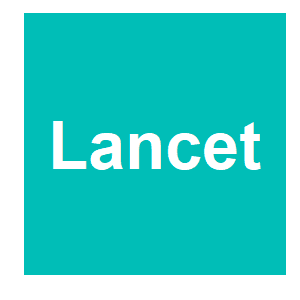
|
2021 WHO guidelines on genetically modified mosquitoesM. Makoni, The Lancet Microbe, 2:e353. 2021.
On May 19, 2021, WHO updated its guidelines for research and development on genetically modified mosquitoes, which define the standards for decision-making about how and when testing should proceed and describe best practices to ensure that research done in a public health ... Keywords: Gene drive, GMO, mosquitoes, opinion, Uganda |
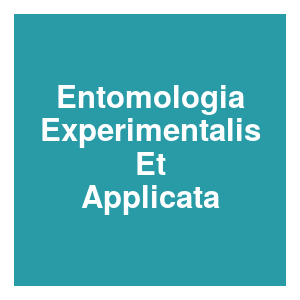
|
Host-associated differentiation of target pests should be assessed before using gene drive as a pest control tool – an opinionR. F. Medina, Entomologia Experimentalis et Applicata, 2021.
Abstract Advances in gene editing have made feasible the potential use of gene drive for pest control. Ecological risk assessments will certainly be required before this technology can be released into open fields. In this article I argue for the importance to include ... Keywords: Gene drive, GMO, mosquitoes, opinion, Uganda |

|
Selfish DNA: how new gene technology could stop the advance of miceM. McMillan, Tentenfield Star, 2021.
It used to be that seeing a mouse in the house was a rare occurrence. Now, it's rarely a day that goes by where we aren't seeing or hearing the little vermin. Current methods of baiting and trapping are struggling to control the plague of mice spreading across regional ... Keywords: Gene drive, GMO, mosquitoes, opinion, Uganda |

|
Living With the Limits of Our New Clerisy’s KnowledgeR. Fernandez, PJ Media, 2021.
We are living in a strange time when reason has fallen short of human expectations and there is, once again, pressure to place our trust in faith. Leighton Woodhouse hit the nail on the head when he argued that we have appointed a New Clerisy to rule over us, not because they are ... Keywords: Gene drive, GMO, mosquitoes, opinion, Uganda |

|
Why the EU should back research into gene drive – even if Europe never uses itR. Müller, The Brussels Times, 2021.
As the EU’s Biodiversity Strategy reaches the European Parliament, it has reopened a worrying debate about research into gene drive technology, a tool which could pave the way for biasing the inheritance of desired genetic traits through targeted species. Advances in this kind ... Keywords: Gene drive, GMO, mosquitoes, opinion, Uganda |

|
Drivers of mosquito matingN. C. Manoukis, Science, 371:340. 2021.
Gene drive systems are based on the release of organisms whose genomes have been modified or engineered to spread a desired allele or trait (such as resistance to the parasites that cause malaria) through a population. Success will depend on the release of genetically modified ... Keywords: Gene drive, GMO, mosquitoes, opinion, Uganda |
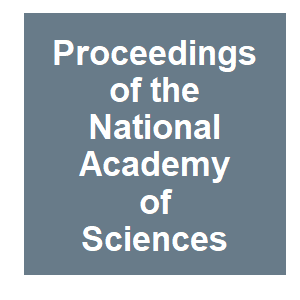
|
Standardizing the Definition of Gene DriveL. S. Alphey, A. Crisanti, F. Randazzo and O. S. Akbari, Proceedings of the National Academy of Sciences, 202020417. 2020.
As members of the gene drive community, we have developed a set of definitions to help stakeholders discuss the topic and communicate using a common understanding of terms. Keywords: Gene drive, GMO, mosquitoes, opinion, Uganda |
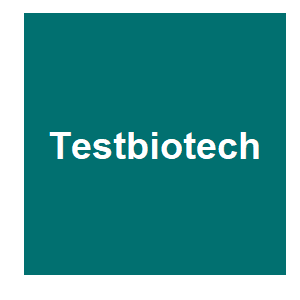
|
Mutagenic chain reaction cannot be sufficiently controlledChristoph Then, Testbiotech, 2020.
The European Food Safety Authority (EFSA) has published the results of its public consultation on the risks of so-called gene drive organisms. Testbiotech accuses the authority of disguising the real dimension of the risks. Gene drives are designed to spread artificial genetic ... Keywords: Gene drive, GMO, mosquitoes, opinion, Uganda |

|
The ethical way to alter organismsK. Esvelt, Boston Globe, 2020.
As my colleagues and I first described in 2014, we can use CRISPR genome editing to duplicate the most powerful form of “gene drive,” a ubiquitous natural phenomenon that happens when a genetic change is inherited more frequently than usual. Encode the CRISPR machinery next ... Keywords: Gene drive, GMO, mosquitoes, opinion, Uganda |

|
Advances in genetic engineering test democracy’s capacity for good decision-makingN. Kofler and R. Taitingfong, Boston Globe, 2020.
New advances in genetic engineering and their application for environmental conservation and public health are further testing our democracy’s capacity for good decision-making. With minimal public input, the Environmental Protection Agency recently approved the release of ... Keywords: Gene drive, GMO, mosquitoes, opinion, Uganda |

|
Driven to ExterminateZ. Moloo and J. Thomas, etc group, 2020.
Gates’s ‘let’s deploy it’ response may not seem out of character, but it was an unusually gung ho response given how risky the technology is widely acknowledged to be. Keywords: Gene drive, GMO, mosquitoes, opinion, Uganda |

|
Do Africans Want Genetically Modified Mosquitoes?U. Effiong, The Pursuit, 2020.
The recent publication by fellow Nigerian scientists—Patricia Okorie and colleagues—originally drew my attention to the issue of GMMs. Keywords: Gene drive, GMO, mosquitoes, opinion, Uganda |

|
Global citizen deliberation on genome editingJ. S. Dryzek, D. Nicol, S. Niemeyer, S. Pemberton, N. Curato, A. Bächtiger, P. Batterham, B. Bedsted, S. Burall, M. Burgess, G. Burgio, Y. Castelfranchi, H. Chneiweiss, G. Church, M. Crossley, J. de Vries, M. Farooque, M. Hammond, B. He, R. Mendonça, J., Science, 369:1435. 2020.
Here we show how, as the global governance vacuum is filled, deliberation by a global citizens' assembly should play a role, for legitimate and effective governance. Keywords: Gene drive, GMO, mosquitoes, opinion, Uganda |

|
Why the UK could end up deploying risky gene drives while ignoring natural biological controlJ. Mathews, GM Watch, 2020.
First they cloned Dolly the sheep. Now they’re targeting grey squirrels Keywords: Gene drive, GMO, mosquitoes, opinion, Uganda |

|
Do Africans need genetically modified mosquitoes?genetically modified, mosquito, oxitec, autocidal, SIT, perspective, malaria, gene drive synthetic, engagement,, Mail and Guardian, 2020.
The following is an updated version of an article I wrote for the University of Michigan Risk Science Centre a while ago: Keywords: Gene drive, GMO, mosquitoes, opinion, Uganda |
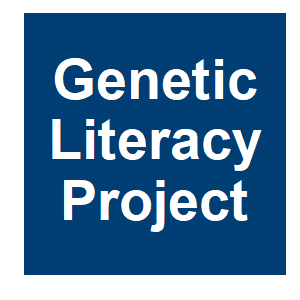
|
Viewpoint: Is there a scientific basis to ban gene drive technology that can rid us of virus-carrying rodents and mosquitoes?K. Vavitas, Genetic Literacy Project, 2020.
Gene drives may be invaluable tools to control the spread of parasites, invasive species, and disease carriers. But the technology has faced strong opposition from activist groups and some mainstream scientists based on environmental and food safety. Are these concerns valid? Keywords: Gene drive, GMO, mosquitoes, opinion, Uganda |
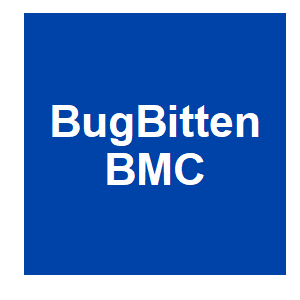
|
Cytoplasmic incompatibility: an autocidal mechanism for mosquito population controlV. Dev, BugBitten BMC, 2020.
Cytoplasmic incompatibility resulting in non-reciprocal fertility is a naturally occurring phenomenon, but remains unexplored to greater extent for the control of insect vector populations. This mechanism deserves priority for mosquito control and reducing disease transmission, ... Keywords: Gene drive, GMO, mosquitoes, opinion, Uganda |

|
CRISPR gene drives could eliminate many vector-driven pests and diseases, but challenges remainJ. Champer, Genetic Literacy Project, 2020.
A functioning gene drive system could fundamentally change our strategies for the control of vector-borne diseases by facilitating rapid dissemination of transgenes that prevent pathogen transmission or reduce vector capacity. CRISPR/Cas9 gene drive promises such a mechanism, ... Keywords: Gene drive, GMO, mosquitoes, opinion, Uganda |

|
An argument for gene drive technology to genetically control populations of insects like mosquitoes and locustsI. Ronai and B. Lovett, The Conversation, 2020.
The fate of society rests in part on how humans navigate their complicated relationship with insects – trying to save “good” insects and control “bad” ones. Some insects, like mosquitoes, bite people and make them sick – remember Zika? Now the U.S. mosquito season is ... Keywords: Gene drive, GMO, mosquitoes, opinion, Uganda |

Contact
David O’Brochta
Foundation for the
National Institutes of Health
geneconvenevi@fnih.org
RSS

